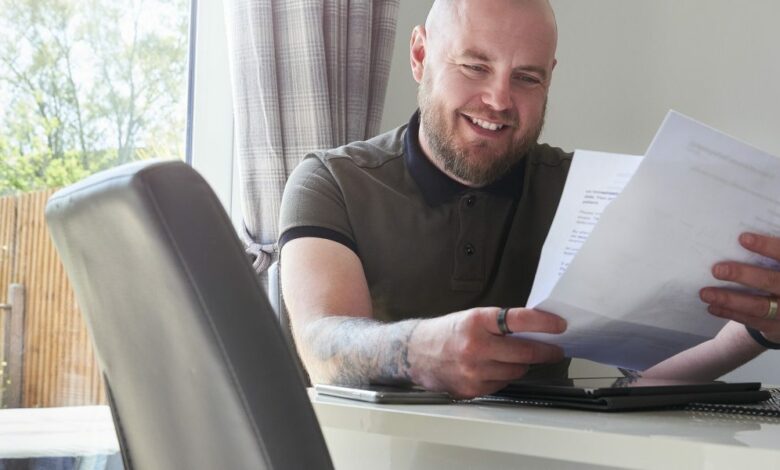7 proven ways to reduce — or even eliminate — your debt


That sinking feeling you get when you open your credit card bill and realize how much you owe is the worst. And with people taking on more debt, it’s a feeling we’re experiencing more often. According to Experian, one of the three credit bureaus, people owe an average of $27,091 in unsecured debt, such as credit cards and personal loans — an increase of 16% from 2021.
If you pay only the minimum that you owe, you could be in debt for years, if not decades, and pay back thousands more than you initially charged. However, you can accelerate your repayment — and reduce money-related stress — by using these tips for reducing debt:
1. Pay more than the minimum
When you review your credit card bill, you’ll notice that the company tells you how much your statement balance is, and it also lists a minimum payment amount you must make to keep your account in good standing. The minimum payment is usually 2% to 4% of the account balance; if your balance was $5,000, your minimum payment would be $100 to $200 per month.
However, the minimum payment won’t do much against your debt.
“If you’re not making significantly more than the minimum monthly payment, that debt balance is not going down anytime soon,” cautioned LaDonna Cook, a manager of program performance with Greenpath Financial Wellness, a non-profit credit counseling agency.
To save money and pay off your debt faster, you have to make larger payments.
For example, let’s say you owe $5,000 on a credit card with a 22% annual percentage rate (APR). Your minimum payment is 3% of your balance, or $150. By making just the minimum payment, it would take 52 months to pay off the balance, and you’d pay a total of $7,798.05 thanks to the high interest rate.
If you increased your payment amount to $200 — a $50 increase — you could be out of debt 18 months sooner, and you’d repay a total of just $6,749.88. By increasing your payments, you’d save over $1,000.
2. Utilize the power of the debt avalanche
If you have multiple credit accounts with outstanding balances, the most cost-effective strategy for managing your debt is the debt avalanche repayment method. With this approach, you list your accounts, ordering them from the one with the highest APR to the one with the lowest. Continue making the minimum required payments on all accounts, but apply any extra money you may have to the account with the highest APR.
Once the highest-interest debt is paid in full, roll that account’s payment amount toward the account with the next-highest rate, and continue this strategy until you’re completely debt-free.
Because this strategy first targets the most expensive debt, you’ll save more money and be out of debt faster than you would with other approaches.
3. Transfer your high-interest balance
The average APR on credit cards that charged interest was over 22% as of February 2024, the last available data. With such a high rate, making progress on your debt repayment journey can be frustratingly slow.
One way to speed it up is to use a balance transfer, moving your debt to a credit card with a promotional 0% APR. Some cards give you as long as 18 months at 0% APR, giving you over a year to pay down your debt without interest.
You’ll typically pay a fee to transfer your balance, and balance transfer fees are usually 3% to 5% of the transferred amount. In general, you’ll need good to excellent credit to qualify for a card with an introductory 0% APR.
4. Apply for a debt consolidation loan
If you have good to excellent credit — or a friend or relative with good credit to co-sign a loan with you — a debt consolidation loan could be a useful tool for saving money and repaying your balances.
Debt consolidation loans are types of unsecured personal loans used to pay off existing high-interest debt. For borrowers with good credit, personal loans generally have lower rates than credit cards, so more of your payment goes toward the principal rather than interest, so you could potentially save a substantial amount of money.
However, be cautious: debt consolidation loans only work if you’re disciplined and focused on debt repayment.
“One of the things that I’ve seen happen over and over again is that people take out a consolidation loan for the amount of debt that they have,” said Kim Cole, a community engagement manager with Navicore Solutions, a non-profit credit counseling agency. Now, they have a zero balance. And even though they’re convinced that they’re not going to use the cards, they haven’t changed their habits, and they end up racking the debt right back up onto the cards. Now they have their credit card debt and the new loan payment.”
5. Get professional help
If you’re overwhelmed by your debt and are struggling to keep up with the payments, seek out the help of a non-profit credit counselor. They will review your budget and your debt and work with you to identify solutions.
“Usually, the assessment is 100% free, and you can have someone look at your financial situation and tell you what your options are,” said Cook. “There is generally more than one solution, and it [the assessment] really gives the consumer a way forward.”
One option is a debt management plan (DMP). With a DMP, the credit counselor reaches out to your creditors to request interest rate reductions. Non-profit counseling agencies have agreements with many major banks and credit unions, so they’re often able to significantly lower your rates and fees, making your debt more manageable. You make one single payment to the agency, and the agency disburses it to your creditors on your behalf.
Besides the cost savings, the other benefits of a DMP can be substantial.
“Usually, once the client makes three payments, the creditor will start to report that debt as current, which means no late fees,” said Cole. “If there is an over the limit situation, there’s no more over the limit fees, and no more phone calls from collection agencies.”
If you stick with the DMP, you could be out of debt within three to five years. However, you have to give up access to your credit cards while you’re in the DMP, and you can’t open up new lines of credit.
You can find reputable credit counseling agencies through the Financial Counseling Association of America or the National Foundation for Credit Counseling.
6. Use your windfalls
During the year, you may receive unexpected influxes of cash, such as a gift from a loved one, a bonus from work or your tax refund. If you apply that windfall to your debt as a lump sum payment, you could cut down on interest charges and get out of debt faster.
For example, the average refund for the 2024 tax filing season was over $3,000. If you had $5,000 of credit card debt at 22% APR and used your refund as a lump sum payment, you’d be out of debt three years sooner, and you’d save over $2,400 in interest.
7. Consider debt settlement
As a last resort, debt settlement is a way to handle your debt when it feels insurmountable. Debt settlement companies will contact your creditors to convince them to settle your debt
for less than you owe; depending on your situation, you could cut your debt by as much as 50%.
However, debt settlement is risky. Some creditors refuse to work with any debt settlement company, and, because you have to stop making payments as part of the negotiations, it can wreck your credit. Plus, debt settlement companies are for-profit entities that charge a percentage of your enrolled debt. Depending on the company, the fee can be as much as 25% of your balance.
The takeaway
Reducing your debt can seem like a daunting task, but it’s a critical one. Paying down your debt will help you save money, but it also can take an enormous weight off your shoulders. Paying more than the minimum, consolidating your debt, exploring government debt relief programs or seeking out professional help are all effective ways to manage your money. If you need help from experienced professionals, check out the best debt relief companies.
Source link




